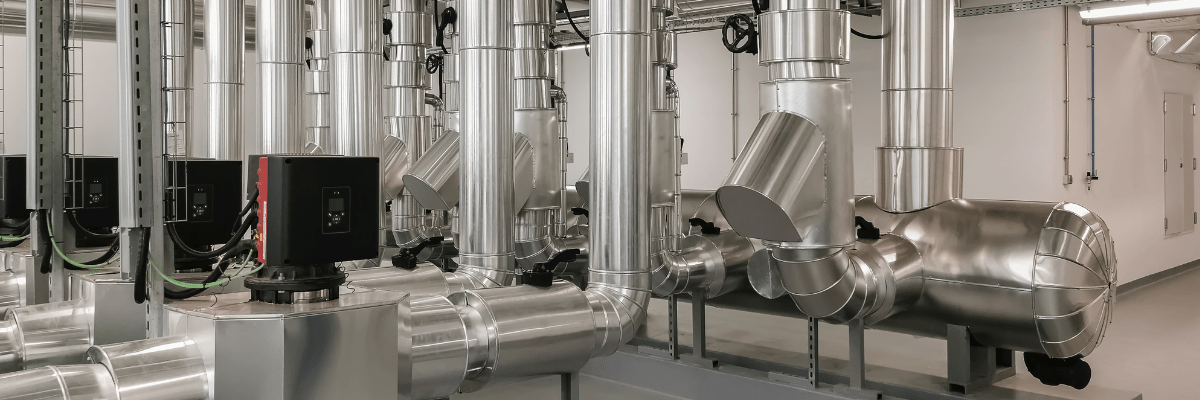Many modern buildings, including homes and commercial spaces, are constructed to be airtight. This practice is intended to save energy. However, the lack of ventilation can create unhealthy indoor air quality by trapping contaminants inside and reducing oxygen levels. Installing an energy recovery ventilator adds fresh air in an efficient way that also reduces energy costs.
For technicians, here’s what you need to know about this useful HVAC technology.
What does an energy recovery ventilator do?
An energy recovery ventilator (or ERV) provides mechanical ventilation to make indoor air more comfortable and healthy. It takes in air from outdoors, and partially conditions the air before it enters the space by mixing it with indoor air.
In cold weather, it warms incoming fresh air by mixing in humidity that’s been extracted from indoor exhaust. In warm weather, the process is reversed: moisture is removed from the incoming fresh air to cool it before it’s distributed to the indoor space.
This process reduces the load on the existing HVAC system while boosting energy efficiency. It also helps to keep indoor humidity levels consistently comfortable, between 40 and 60 percent.
A heat recovery ventilator is a similar technology that preheats incoming fresh air by mixing it with warm exhaust air, but can’t remove humidity or cool incoming fresh air in summer.
What are the benefits for the home or commercial space?
Improve indoor air quality
Sealed buildings trap all kinds of contaminants inside the building, including VOCs from cleaners and building materials, carbon dioxide and other byproducts of respiration, as well as airborne bacteria and viruses. Since air can’t get in from outside, spaces with high occupancy also tend to have reduced oxygen levels.
Adding ventilation with an ERV helps to expel contaminants and bring in fresh outdoor air to replenish oxygen.
Control humidity levels
Adding mechanical ventilation without an ERV can create uncomfortable humidity levels by bringing in excess humidity in summer, or bringing in extremely dry air in winter.
Adding an ERV helps to keep humidity at optimal levels all year long. That’s not only about comfort, but also preventing mold and mildew growth.
Lower energy costs
An ERV can improve indoor air quality without increasing the load on the existing HVAC system, since it conditions the incoming air before it enters the space. That improves energy efficiency and reduces energy consumption.
Energy recovery ventilator: tips for installation & service
Calculating the needed capacity (CFM)
ASHRAE provides standards for correctly sizing an ERV system for the space. ERV capacity (or sizing) is expressed in cubic feet per minute (CFM). For residential spaces, the unit must be capable of producing .35 air changes per hour.
Here’s how you calculate the capacity needed to do that:
- Calculate the cubic volume of the space (square footage x ceiling height)
- Divide by 60
- Multiply by .35
Choosing intake and return locations
Mechanical ventilation intakes must always be installed away from sources of outdoor pollution, such as driveways and exhaust vents from furnaces, kitchens, and laundry rooms.
For residential systems, intakes should be placed in bedrooms and common areas. In commercial spaces, they should be places in areas of highest occupancy.
Returns should be located in high humidity locations such as in kitchens and bathrooms, and within a foot of the ceiling. However, especially in a commercial kitchen, avoid placing them too close to cooktops to prevent the ERV getting clogged by airborne grease. In very humid areas, a drain may be needed to remove condensation.
Use smooth, insulated duct material and create runs that are as short and straight as possible.
ERV maintenance
During regular HVAC maintenance visits, here are the ERV maintenance tasks you’ll need to perform:
- Clean hoods and screens
- Change filters
- Clean the unit core
- Clean condensate drains and pans
Depending on the conditions, some of these tasks may need to be done more often, such as changing the filters. You can show the customer how to do that and order them extra filters.
HVACR technicians: the easy way to boost your knowledge
HVACR Career Connect NY has the information and advice you need to build a successful career as an HVAC and Refrigeration technician.
Sign up for our mailing list (below) to get our monthly newsletter.
HVACR Career Connect NY was created to promote the exceptional quality-of-life benefits of a career in HVAC and Refrigeration service, and also to provide a clear path for getting started in the profession. In doing so, we serve as a resource for employers in the New York City metro area to find and hire smart and capable new technicians. We also serve as an educational resource to support business growth and to help service technicians succeed in their chosen profession.
